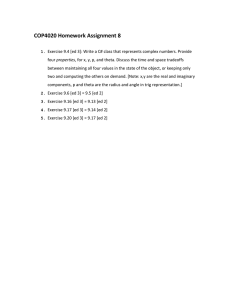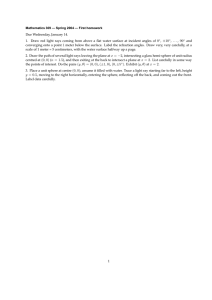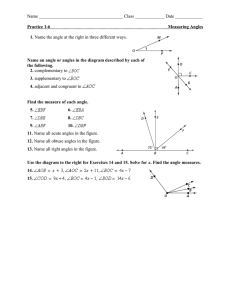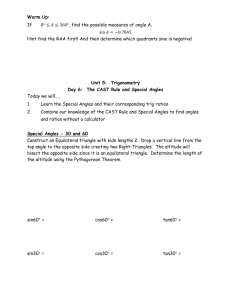Measuring angles and radii of curvature
advertisement
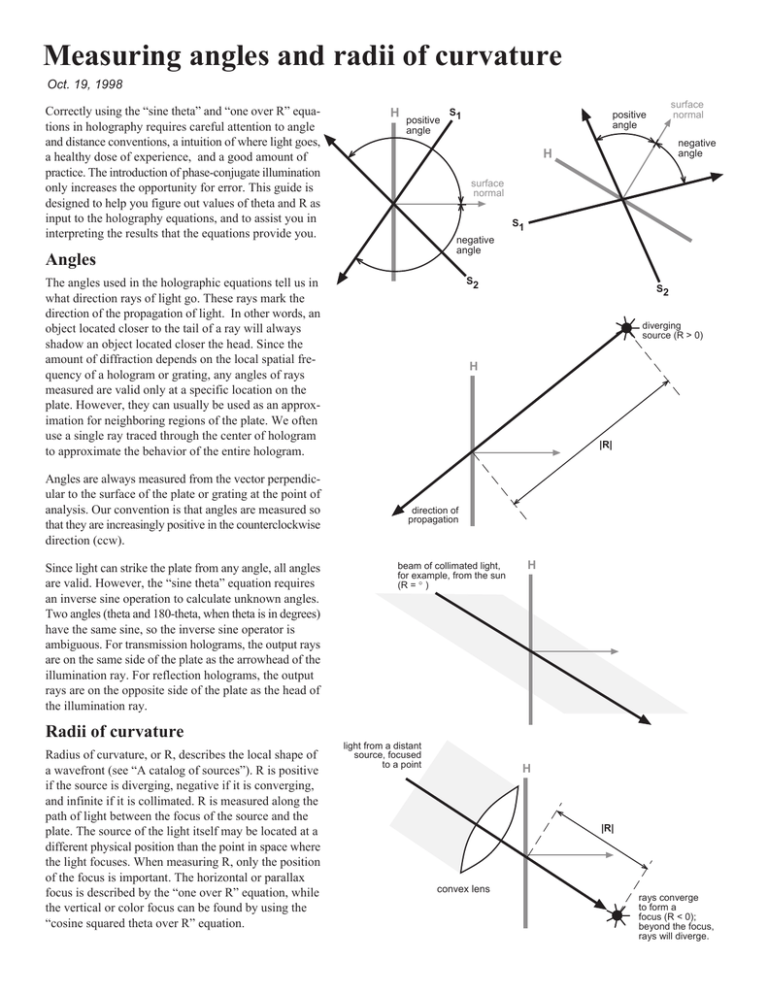
Measuring angles and radii of curvature Oct. 19, 1998 Correctly using the “sine theta” and “one over R” equations in holography requires careful attention to angle and distance conventions, a intuition of where light goes, a healthy dose of experience, and a good amount of practice. The introduction of phase-conjugate illumination only increases the opportunity for error. This guide is designed to help you figure out values of theta and R as input to the holography equations, and to assist you in interpreting the results that the equations provide you. H positive angle S1 surface normal S1 negative angle The angles used in the holographic equations tell us in what direction rays of light go. These rays mark the direction of the propagation of light. In other words, an object located closer to the tail of a ray will always shadow an object located closer the head. Since the amount of diffraction depends on the local spatial frequency of a hologram or grating, any angles of rays measured are valid only at a specific location on the plate. However, they can usually be used as an approximation for neighboring regions of the plate. We often use a single ray traced through the center of hologram to approximate the behavior of the entire hologram. Since light can strike the plate from any angle, all angles are valid. However, the “sine theta” equation requires an inverse sine operation to calculate unknown angles. Two angles (theta and 180-theta, when theta is in degrees) have the same sine, so the inverse sine operator is ambiguous. For transmission holograms, the output rays are on the same side of the plate as the arrowhead of the illumination ray. For reflection holograms, the output rays are on the opposite side of the plate as the head of the illumination ray. negative angle H Angles Angles are always measured from the vector perpendicular to the surface of the plate or grating at the point of analysis. Our convention is that angles are measured so that they are increasingly positive in the counterclockwise direction (ccw). surface normal positive angle S2 S2 diverging source (R > 0) H |R| direction of propagation beam of collimated light, for example, from the sun (R = ∞) H Radii of curvature Radius of curvature, or R, describes the local shape of a wavefront (see “A catalog of sources”). R is positive if the source is diverging, negative if it is converging, and infinite if it is collimated. R is measured along the path of light between the focus of the source and the plate. The source of the light itself may be located at a different physical position than the point in space where the light focuses. When measuring R, only the position of the focus is important. The horizontal or parallax focus is described by the “one over R” equation, while the vertical or color focus can be found by using the “cosine squared theta over R” equation. light from a distant source, focused to a point H |R| convex lens rays converge to form a focus (R < 0); beyond the focus, rays will diverge.
